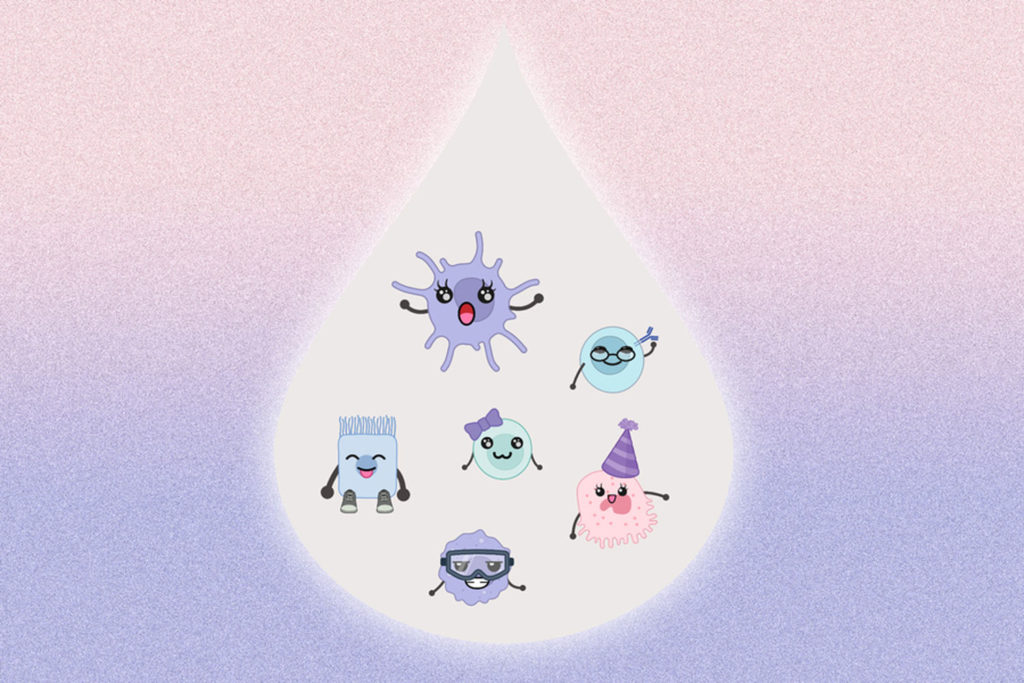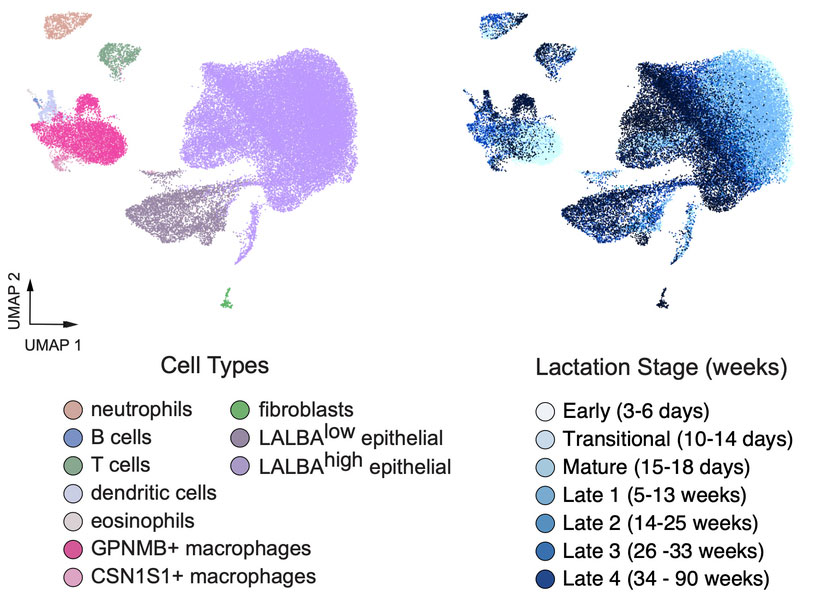Human breast milk is the nutritional food source explicitly evolved to meet the needs of infants. It contains millions of cells. However, less is known about the composition and changes throughout lactation. Plus, the identity and phenotypic properties of milk cells remain poorly understood.
MIT scientists have performed a large-scale, high-resolution study of the cells in breast milk to determine how these cells change over time in nursing mothers.
Scientists analyzed human breast milk produced between three days and nearly two years after childbirth for the study. They used single-cell RNA-sequencing (scRNA-seq) data to characterize the transcriptomes of cells. A variety of changes in gene expression were identified in mammary gland cells. Some of these changes are associated with hormone levels, illness of the mother or baby, the mother starting birth control, and the baby starting daycare.
Scientists also took a long view of lactation that other studies haven’t done. They found that milk does change over the entire course of lactation, even after years of milk production.

Scientists gathered milk samples from 15 nursing mothers. They also collected information about health and lifestyle changes that occured during the lactation period.
More than 48,000 cells were isolated from 50 samples. Scientists used single-cell RNA-sequencing to analyze the samples and revealed ten types of cells- a population of fibroblast cells, two types of epithelial cells, and seven types of immune cells.
More than half of the cells were found to be macrophages. These cells appear to express genes that help make the mammary gland more tolerant of the milk proteins they produce, so they don’t trigger an immune response. Scientists also found a population of B cells, T cells, and other immune cells. However, they were present in a small amount to do any in-depth studies of their functions.
The most abundant cells that they found were lactocytes, which are a type of epithelial cell. These cells expressed many genes for proteins found in breast milk, such as lactalbumin and transporters needed to secrete milk proteins, micronutrients, fat, and other breast milk components.
AMong lactocytes, one cluster of cells found to be the primary producer of milk. They also found another cluster that plays a structural role in the mammary gland.
Each of these cells can be classified further into subtypes. As time passed, scientists found that the proportion of lactocytes involved in milk production went down, while the proportion involved in structural support went up. Simultaneously, genes that responded to the hormone prolactin became more active in the milk-producing lactocytes but dropped off in structural lactocytes.

Scientists noted, “These changes may be related to the changing nutritional needs of infants as they grow.”
Brittany Goods, a former MIT postdoc who is now an assistant professor of engineering at Dartmouth College, said, “This study, along with some other studies that are out there, paves the way for mapping out and better understanding some of the pathways that these cells use to accomplish the tremendous amount of work that they do.”
MIT graduate student Sarah Nyquist said, “We also found links between the composition of cells in breast milk and events such as babies starting to go to daycare, starting formula, or the mother starting to use hormonal birth control.”
“There are clear changes in the composition of breast milk related to these lifestyle and health changes, such as infant illness or maternal hormonal birth control. These changes in lactation don’t necessarily have a positive or negative impact on anyone’s health. Still, they do occur, and they may lead us to insights into how mammary epithelial cells produce milk and the types of components they may be producing.”
With further studies, scientists plan to find stronger links between environmental factors and milk composition and discover how milk naturally changes over time. This could eventually help scientists devise better infant formulas or create formulas adapted to different infancy stages.
Goods said, “By building this high-resolution understanding of lactational diversity over time, it gives us a way not only to understand lactation, but it also gives us a set of data and tools to be able to engineer better solutions to improve the quality of life of mothers, specifically when they’re nursing.”
Journal Reference:
- Sarah K. Nyquist et al. Cellular and transcriptional diversity throughout human lactation. DOI: 10.1073/pnas.2121720119
